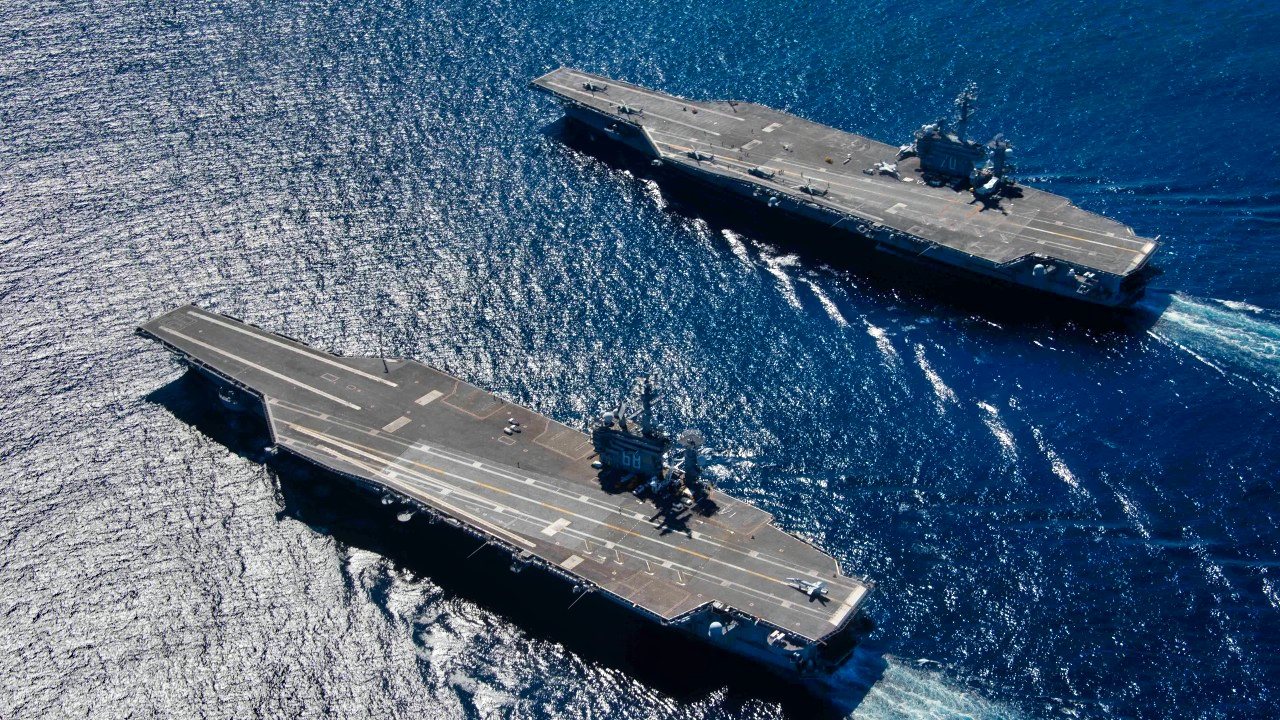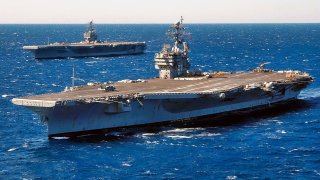China Has 100,000 Mines Built for 1 Goal: Sink the U.S. Navy
China’s advanced manufacturing allows it to mass-produce effective naval mines, posing a serious threat to U.S. Navy operations near Chinese waters.
What You Need to Know: China’s advanced manufacturing allows it to mass-produce effective naval mines, posing a serious threat to U.S. Navy operations near Chinese waters.

-China’s growing arsenal, potentially including sophisticated stealth, rising, and sensor-activated mines, could blockade strategic ports and threaten U.S. warships in confined zones like the South China Sea and Taiwan Strait.
-The U.S. Navy’s reduced minesweeping capability complicates defense against this threat, especially in tight, shallow waters where mines are challenging to detect and remove.
-This underscores the need for the U.S. to enhance minesweeping and counter-mine technologies to ensure operational effectiveness against China’s naval defense strategies.
China’s Secret Naval Weapon: Why Mines Pose a Growing Threat to U.S. Navy
China has already proven it has superior manufacturing capacity than the United States, at least at the mass-production level. And contrary to popular opinion in the West, Chinese technology is reaching parity with the Americans. This all translates to significant strategic advantages for the Chinese military if Beijing and Washington ever go to war.
One area that the Americans should be much more concerned about is in the maritime strategic domain. Not only does China today have a larger fleet than do the Americans, but China is innovating new methods of attack against U.S. warships.
I’ve written endlessly in the last few years about the severe threat that China’s growing anti-access/area-denial systems pose to the U.S. military, and especially to the Navy. But China also has the ability to design and mass-produce relatively cheap, highly lethal naval mines. Some of these mines could threaten U.S. aircraft carriers.
The Threat of Mines
In a 1998 article cited in 2015 by Breaking Defense’s Sydney Freedberg, Chinese strategist Ren Daonan wrote that, “During the First World War, the German submarine force alone laid 11,000 sea mines.” Ren went on to explain how Germany mined the Atlantic coastal littoral of the U.S. in both world wars.

Freedberg explained: “Today, stealthy mines made of fiberglass in sonar-deflecting shapes lurk amidst the clutter of the sea floor. There are buried mines covered by layers of sand, mud, and silt that no sonar currently in service can penetrate. There are ‘rising mines’ that wait in deep water for a ship to pass overhead, then ascend until they’re within range to fire a torpedo.” Then there are “mines activated by a ship’s magnetic field, by the sound of its propellers, by pressure differentials in the water as a ship passes overhead.”
Citing mine warfare expert Scott Truver, Freedberg allowed for the possibility that China may have had 100,000 mines already in their arsenal. Again, given the relative affordability and ease of mass-producing such systems, these numbers have probably grown and will continue to grow.
Beijing has already postulated using its mine capability to blockade the ports of nearby Taiwan. Herein lies the problem. U.S. naval warfare experts such as the venerable Brent Sadler insist that it is nearly impossible to sink U.S. aircraft carriers, and in particular to do so with mines. Indeed, a carrier battle group possesses several mine detection capabilities within its layered defenses. On the open seas, it would probably be more difficult than we realize for any mine to hit a carrier.
But there will be no combat in the deep blue seas of the Pacific Ocean between the U.S. Navy and the Chinese Navy. Instead, any conflict between the two powers will be waged in the waters of the South China Sea, the Taiwan Strait, the Bashi Channel, the Luzon Strait, or even the East China Sea or the Yellow Sea.
Battles will be fought in the compact spaces close to Chinese shores – areas the Chinese Navy could easily seed with hard-to-see mines that could eviscerate U.S. Navy warships passing by.
Most naval experts have assessed that the U.S. Navy has allowed its minesweeping capabilities to decline significantly since the Cold War. It will take years to update those capabilities to better counter China’s mine capabilities at sea.
Author Experience and Expertise: Brandon J. Weichert
Brandon J. Weichert, a National Interest national security analyst, is a former Congressional staffer and geopolitical analyst who is a contributor at The Washington Times, the Asia Times, and The-Pipeline. He is the author of Winning Space: How America Remains a Superpower, Biohacked: China’s Race to Control Life, and The Shadow War: Iran’s Quest for Supremacy. His next book, A Disaster of Our Own Making: How the West Lost Ukraine, is out now from Encounter Books. Weichert can be followed via Twitter @WeTheBrandon.
All images are Creative Commons or Shutterstock.
From the Vault
Russia Freaked Out: Why the U.S. Navy 'Unretired' the Iowa-Class Battleships
Battleship vs. Battlecruiser: Iowa-Class vs. Russia's Kirov-Class (Who Wins?)


